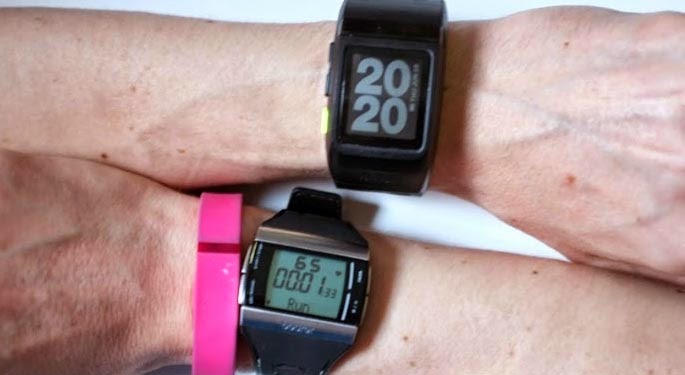Given that pretty much every piece of wearable consumer electronics is made in China, it should be no surprise that Chinese companies are getting in on the act.
Of course, one element of this is copying western designs.
Although it's one of the leading wearable companies in China, Codoon's sport bracelet is "clearly inspired" by Jawbone's Up, even down to the jack-in syncing method and the sun/moon lights for active/sleep mode.
Still I love the Google Translate description on its website: "Smart bracelet fits your lifestyle, inadvertently revealing your life in the pursuit of health".
'Inadvertent revealing' is exactly what wearable computing is all about when it comes to self-monitoring.
Nation of billons
More generally, though, it will be fascinating to see how wearable computing impacts the Chinese market. There are four reasons I think the sector will be vitally important.
One, Chinese manufacturers can make and distribute such devices very cheaply.
Two, the Chinese are suffering a health timebomb, especially with respect to obesity.
Three, the Chinese health care system is going to be revolutionised over the next decade as the burden of cost shifts from individuals and families (hence the high savings rate in China) to the state. Wearable technology will be a key part of keeping costs down and better diagnosing problems.
Four, if the government decides to mandate wearables for health/cost reasons, it has the power to make it happen. Unlike in the west, personal privacy concerns will not be a barrier to widespread adoption in China.
In that context, it's also significant that Baidu - often viewed as China's Google - is heavily pushing its cloud-based backend platform for wearable device and app companies to hook into.
Of course, one element of this is copying western designs.
Although it's one of the leading wearable companies in China, Codoon's sport bracelet is "clearly inspired" by Jawbone's Up, even down to the jack-in syncing method and the sun/moon lights for active/sleep mode.
Still I love the Google Translate description on its website: "Smart bracelet fits your lifestyle, inadvertently revealing your life in the pursuit of health".
'Inadvertent revealing' is exactly what wearable computing is all about when it comes to self-monitoring.
Nation of billons
More generally, though, it will be fascinating to see how wearable computing impacts the Chinese market. There are four reasons I think the sector will be vitally important.
One, Chinese manufacturers can make and distribute such devices very cheaply.
Two, the Chinese are suffering a health timebomb, especially with respect to obesity.
Three, the Chinese health care system is going to be revolutionised over the next decade as the burden of cost shifts from individuals and families (hence the high savings rate in China) to the state. Wearable technology will be a key part of keeping costs down and better diagnosing problems.
Four, if the government decides to mandate wearables for health/cost reasons, it has the power to make it happen. Unlike in the west, personal privacy concerns will not be a barrier to widespread adoption in China.
In that context, it's also significant that Baidu - often viewed as China's Google - is heavily pushing its cloud-based backend platform for wearable device and app companies to hook into.
















